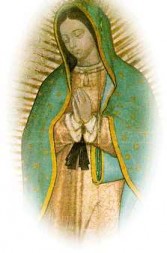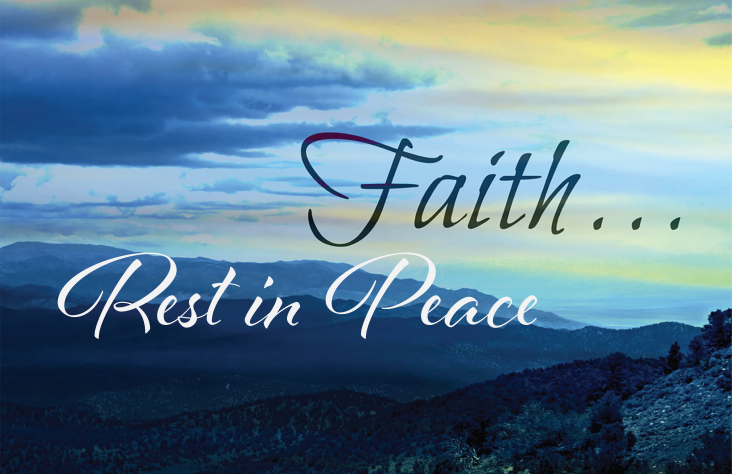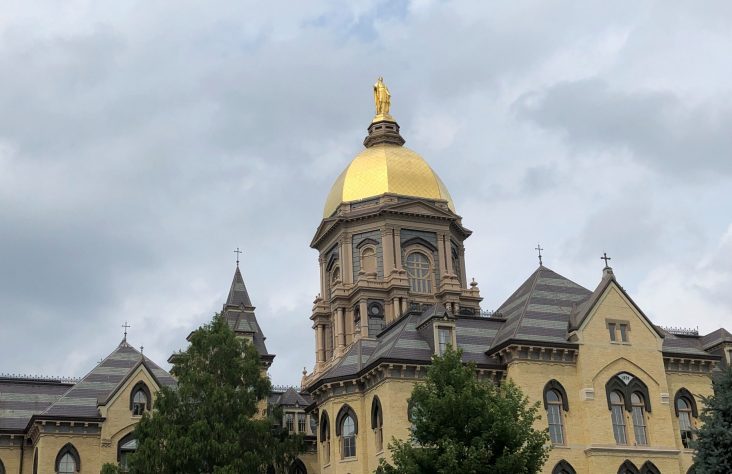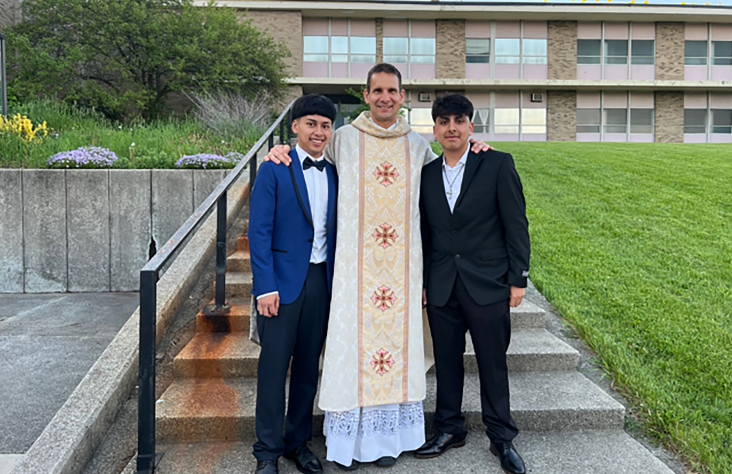December 3, 2013 // Local
Celebrating the feast of Our Lady of Guadalupe, Dec. 12
 Celebrations of Our Lady of Guadalupe on Dec. 12 at various parishes around the diocese this year will enlighten the hearts and minds of the historical event that took place many years ago in Mexico, a series of apparitions that motivated Blessed Pope John Paul II to visit Our Lady of Guadalupe’s Sanctuary more than once in Mexico City.
Celebrations of Our Lady of Guadalupe on Dec. 12 at various parishes around the diocese this year will enlighten the hearts and minds of the historical event that took place many years ago in Mexico, a series of apparitions that motivated Blessed Pope John Paul II to visit Our Lady of Guadalupe’s Sanctuary more than once in Mexico City.
Isabel Jakob, a native of San Salvador and former professor at the University of Notre Dame, shares the story at the end of this article.
In the Diocese of Fort Wayne-South Bend, on the South Bend side, the Guadeloupians began at a Hungarian parish at the former St. Stephen Church. To have this solemn and festive day filled with the original “fiesta” environment, the Guadeloupians would gather to decorate the church with colorful paper mache flowers around Our Lady of Guadalupe’s statue. Banners for the procession during the liturgy were prepared, proclaimers of the Word practiced, all people and things related to this special Mass, including the extraordinary ministers of the Eucharist, made their preparations, a tradition that continues today.
The “Guadalupanas” women gather in homes to prepare meals after the Mass to be sure all those attending would have a traditional meal with tamales, “champurion” (a hot tea with cinnamon sticks, cloves, fruit and other ingredients) rice, frijoles and delicious pastries.
Colorful costumes would be sewn to depict the story through plays about the miraculous event that took place at Tepeyac, Mexico.
Typically for this special day, mariachis are chosen for the music. In at least one of the diocesan parishes, Our Lady of Guadalupe, Warsaw, mariachis sing many songs of honor to Our Lady all through the evening before, Dec. 11, and will be there early in the morning Dec. 12, to sing the “mañanitas” to Our Lady of Guadalupe, a song of honor to the mother of our Lord Jesus Christ. At least 13 parishes prepare events honoring Mother Mary for this feast day.
Parish celebrations:
Our Lady of Hungary, South Bend
On the feast day of Our Lady of Guadalupe, Dec. 12, Bishop Kevin C. Rhoades will celebrate Mass at Our Lady of Hungary. A play will begin at 6 p.m. and Mass will be celebrated at 7 p.m. with a celebration following Mass.
Our Lady of Guadalupe Parish, Warsaw
Dec. 11, 8-10 p.m. — Danzantes (Dancers); 10-11 p.m. — Rosary; 11 p.m. — Mass; 12 a.m. midnight — Mañanitas/Seranade and Celebration
Dec. 12, 6 p.m. — Mass
St. Michael Parish, Plymouth
Dec. 12, 4 p.m. — Procession from the Knights of Columbus to St. Michael Church; 5 p.m. — Mass
St. Vincent de Paul, Elkhart
Dec. 7, 4 a.m. — Rosary and Mañanitas followed by breakfast
Dec. 8, 2 p.m. — Procession from St. Thomas Parish, Elkhart, to St. Vincent, Elkhart; 3:30 p.m. — Mass
Dec. 12, 7 p.m. — Mass
St. Patrick Parish, Fort Wayne
Dec. 3-11, 7 p.m. — Novena at the Church
Dec. 12, 4:30 a.m. — Mañanitas; 6 a.m. — Mass; 6 p.m. — Mass
Dec. 14, 7:30 p.m. — Depiction of the Our Lady of Guadalupe event
Dec. 15, 12:30 p.m. — Mass with a procession celebration after the Mass.
Celebrations throughout the diocese to call for more information:
• St. Dominic, Bremen, (574) 546-3601
• St. Joseph, Fort Wayne, (260) 432-5113
• Immaculate Conception, Kendallville, (260) 347-4045
• St. Joseph, LaGrange, (260) 463-3472
• St. Patrick, Ligonier, (260) 894-4946
• St. Adalbert, South Bend, (574) 288-5708.
The Apparition of the Virgin of Guadalupe
Juan Diego, a very poor Indian man, left his home one morning on Dec. 9, 1531, in order to go to Mass in a town near Mexico City. He was walking by the hill of Tepeyac, a barren place where nothing grew, when he heard heavenly music. At the same time he saw a rainbow with a bright light shining from its center. A beautiful lady approached the man and greeted him with a beautiful voice. She told him that she was the Virgin Mary and sent him to see the bishop of Mexico and ask him to have a church built on the same place they were speaking.
The Indian man went to speak with the bishop, but the bishop did not believe the story. He asked Juan Diego for some proof. That is the reason Juan Diego went back to Tepeyac, in order to speak once more with the Virgin Mary. She told him to come back the next day in order to get proof. But the next day Juan Diego’s uncle became very ill.
On Dec. 12 he went for a priest. He did not want to see the Virgin Mary so he took another road, but she appeared once more and asked what was the matter.
The Indian man explained that his uncle was very ill and that he was going to get a priest. The Virgin told him that his uncle was doing fine and that he should visit the bishop once more. This was the time Juan Diego asked for proof of the miracle that was occurring.
The Virgin sent him to climb a hill in order to gather some flowers. This surprised the man since he knew that nothing grew in that barren land. Nevertheless, he found a beautiful rose garden. He picked some of the roses, and took them in his shawl to the bishop. When he dropped the roses on the floor, everyone saw the Image of the Virgin Mary painted with full colors in the shawl. All cried, “A miracle!”
Immediately they built a church on the same place the miracle took place. They named the town on the hill “Guadalupe.” In 1532, during a solemn procession, they took Juan Diego’s shawl with the Image of the Virgin to the altar of the church. On the 12th of December during the feast of the Virgin of Guadalupe, people from all over the republic come to worship their mother whose original image remains in a new basilica built at the same site.
La aparición de la Virgen de Guadalupe
Juan Diego, un indio muy pobre, salió de su casa la mañana del nueve de diciembre de 1531, para oír misa en un pueblo que estaba cerca de la capital de México. Pasaba por la colina de Tepeyac, sitio árido donde nada crecía, cuando oyó música que parecía venir del cielo. Al mismo tiempo vio un arco iris y en el centro una luz brillante. Una señora muy hermosa se acercó al indio y le saludó con una voz muy dulce. Ella le dijo que era la Virgen María y le mandó ir al obispo de México a decirle que debía construir una iglesia en aquel mismo sitio.
Juan Diego fue a hablar con el obispo, pero éste no le creyó una palabra de lo que decía. Por eso Juan Diego tuvo que ir a Tepeyac para hablar otra vez con la Virgen. Ella le mandó volver al día siguiente para recibir las palabras. Pero al día siguiente el tío de Juan Diego, que estaba enfermo, se puso peor. Sin embargo, el día doce el indio fue a llamar a un cura. Quería evitar encontrarse con la Virgen y tomó otro camino, pero ella apareció otra vez y le preguntó por qué iba por allí. El indio explicó que su tío estaba muy enfermo y que iba por un cura. En ese momento la Virgen le dijo que su tío ya estaba bueno y que podía visitar al obispo otra vez. Entonces Juan Diego le pidió a la Virgen una prueba del milagro.
La Virgen le mandó subir la colina para escoger allí algunas flores, lo que sorprendió mucho al indio porque sabía que nada crecía en aquella tierra árida. Sin embargo, encontró un jardín de rosas muy hermosas. Recogió algunas y las llevó en su manta al obispo. Cundo las dejó caer al suelo a los pies del obispo, todos vieron que la imagen de la Virgen estaba estampada en la manta en colores brillantes. Todos gritaron: ¡Milagro!
Inmediatamente construyeron una iglesia en el sitio del milagro y dieron el nombre de Guadalupe al pueblo que estaba al pie de la colina. En 1532, en una procesión muy solemne, llevaron la manta de Juan Diego, con la imagen de la Virgen, hasta el altar de la iglesia. El doce de diciembre es la fiesta de la Virgen de Guadalupe y de toda la república vienen hombres y mujeres a venerar a su santa patrona, cuya imagen todavía está en la basílica.
The best news. Delivered to your inbox.
Subscribe to our mailing list today.






